The Siege of Paris: the sortie to Malmaison and the Battle of Buzenval, October 21st 1870
Under orders of the governor of Paris, a sortie was made by General Auguste-Alexandre Ducrot in the direction of Rueil with the objective of taking the hamlets of Malmaison, Jonchère, and Buzenval, defended by the 10th Division of the Vth Prussian Corps, a fraction of the 4th Corps, and a battalion of a regiment of the Guard Corps.
Richard Bird
4/16/20246 min read

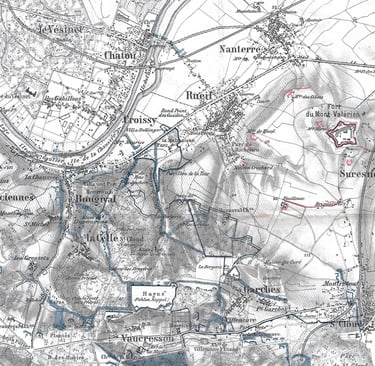
The formations under the command of General Ducrot
General Berthaut with 3,400 men, 20 guns, and one squadron, between the railroad to St. Germain and Rueil;
General Noel, with 1,350 men and 10 guns, will operate against Bougival and the park of Malmaison., moving from the east of the Cucufa ravine.
Colonel Cholleton, with 1,600 men, 18 guns, and a cavalry squadron, to keep up the communication, took a forward position in the old mill above Rueil to link and support the left and right columns and also attack the Château of Buzenval.
There were two main columns of reserve, one under General Martenot with 2,000 men and 18 guns, and the other under General Paturel, consisting of 2,000 men, 28 guns, and two squadrons. The whole, roundly speaking, 10,000 men, 94 guns, and three squadrons, under the supreme command of General Ducrot, were in position an hour after mid-day, supported by the fortress of Mont Valerien.
The French preliminary bombardment
At 8.30am, the guns of Fort Valérien began bombarding the German positions in preparation for the assaults. Around 1 p.m., the field artillery joined in on the bombardment. After the cannonade, the troops marched to the assigned objectives and arrived at the ravine descending from the woods of Saint-Cucufa to the American railroad, bypassing the Malmaison.
Meanwhile, the skirmishers of the second column, commanded by Captain Favre-Biguet of the Cholleton column, rushed to Buzenval, entered it, and advanced under the cover of the woods to the border of the Saint-Cucufa forest.
The Prussian defensive dispositions
General von Kirchbach, commander of the German Vth Corps, prepared his troops. It was to be Lt. General von Schmidt’s 10th Division that was to be the focus of the French assault. The 19th Brigade, under Colonel von Hening auf Schöndorff, formed the outposts, with the 46th regiment as the left wing and the 6th (1st West Prussian Grenadier) Infantry Regiment as the right. The 20th brigade, commanded by Major General von Monbary, was in reserve. This brigade was composed of the 37th and 30th Infantry Regiments. In his front line, the 19th Brigade was between Celle St. Cloud and La Jonchère, with the left wing reaching Villa Metternich, east of Bougival.
A detail from The Siege of Paris map in my collection, showing the main area of fighting during the sortie.
The French assaults
The left column of General Noel passed the ravine and climbed the slopes that rise to Jonchere, but they soon were halted by under heavy rifle fire, leaving the woods from the houses, where the Prussians waited to ambush them. At the same time, one of the four companies of Zouaves, under orders of Commander Jacquot, reached a wooden summerhouse on the slope below La Jonchère and was caught in the corner that forms the Park of Malmaison. They were able to disengage because of the intervention from the battalion at Seine-et-Marne Mobile. This battalion was carried on the slopes above St. Cucufa; its night supported the ark of the Malmaison and opened fire on the Prussians, who were forced to retreat, thus allowing the 4 companies of Zouaves to enter the park.

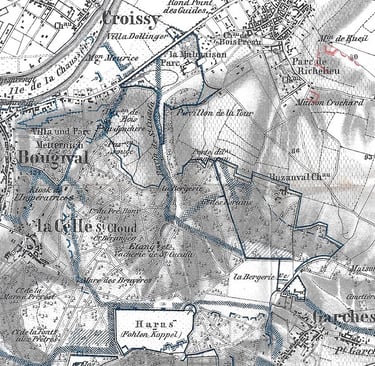
A detail from the Siege of Paris map in my personal collection.
Towards 3 o’clock in the afternoon, four of the French battalions attacked the park of Malmaison,
and after an obstinate fight, they were repulsed by the 46th Regiment, two battalions of the
6th Regiment, and detachments of the 1st Guard Landwehr regiment.
While this attack was in progress, the French directed another against La Celle, which was beaten back by portions of the 50th regiment, the 5th and 6th companies of which, assisted by some men of the 46th regiment, captured two guns and brought them safely away, despite being under heavy French fire.
On the right wing, the advanced troops of the 9th Division under Lt. General von Sandrat, were engaged. The batteries of the IVth corps at Chatou and Besons, on the right bank of the Seine, co-operated with good effect towards the end of the fight, which terminated at 5pm. General Ducrot commanding his troops to return to their barracks in a general retreat of the towards Neuilly and to Fort Mont Valerien, under cover of the guns of the latter. In the main, the column of General Martenot was a diversion on the left.
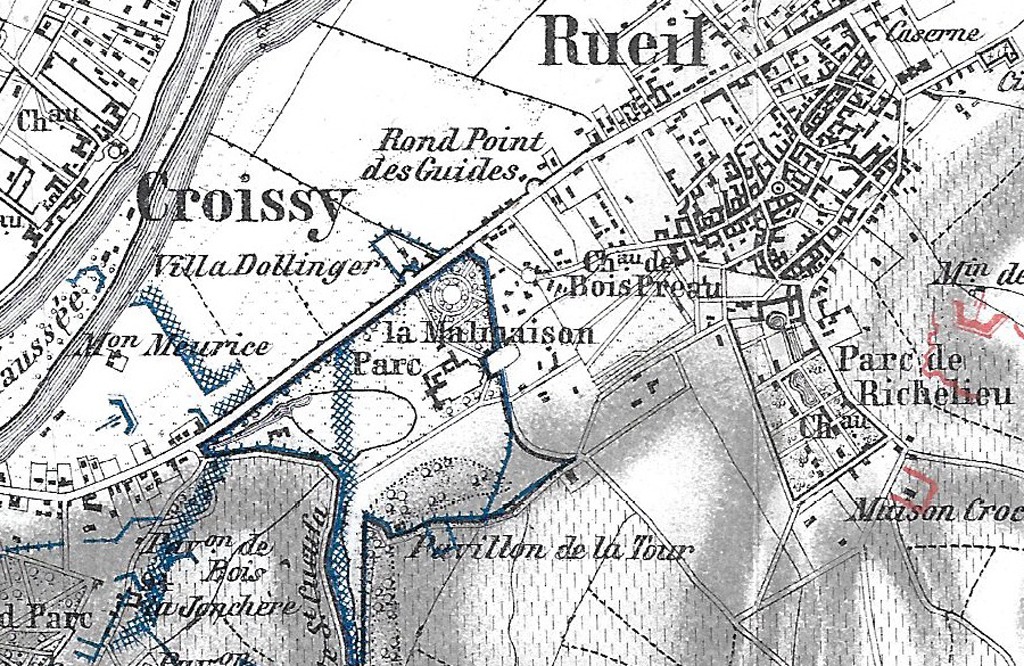

A side show with the Würtemburgers
A small sortie took place at the same time against the Würtemberg division. Three battalions, supported by the Faisandrie redoubt, crossed the Marne at Joinville and advanced against Champigny, but were repulsed by the 2nd Jager battalion and part of the 7th regiment, resulting in a loss of 3 killed and 30 wounded.
Losses in the sortie
general losses of the French for October 21, 1870 were as follows:
Officers: 2 dead, 15 wounded, and 11 missing.
Soldiers: 30 dead, 230 wounded, and 153 missing.
Total: 443
German losses in this combat are given as 15 officers and 297 men killed and wounded, while those of the French were 28 officers and 232 men, exclusive of 800 prisoners.
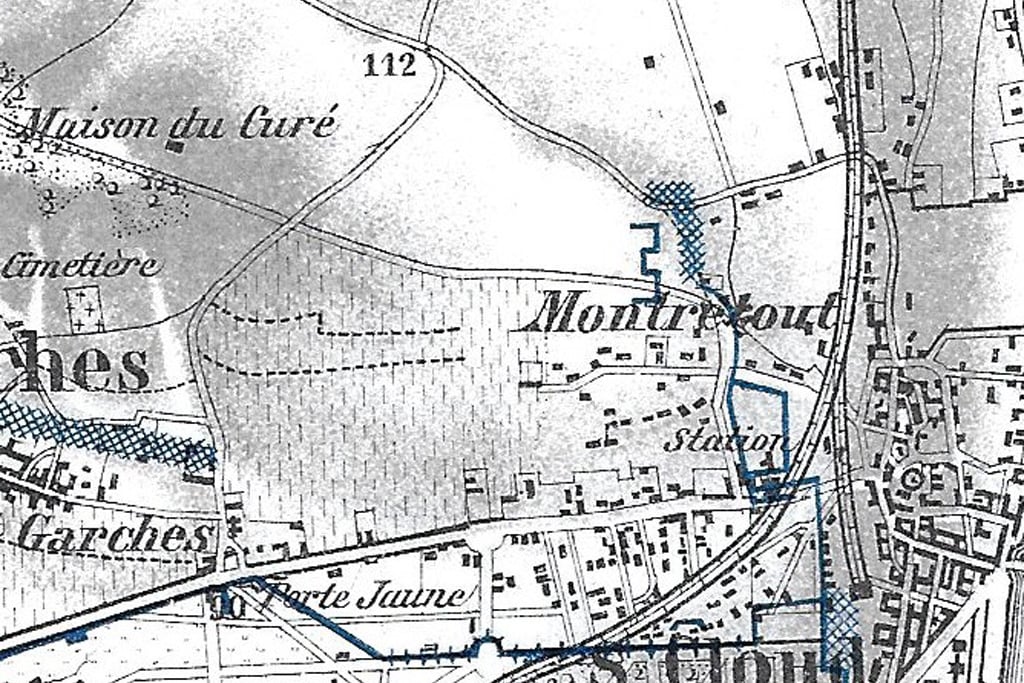

Defence of Longboyau's gate, château of Buzenval
During the sortie, the batteries of Commander Miribel, particularly the 4th battery of Captain Nismes, who was positioned close to the gate of Longboyau, were surprised by Prussian elements. The incident, known as Defense of the gate of Longboyau, consisted of the French and Prussians fighting at close range through the bars of the gate. During the fighting, the French lost the commander of the support company, 10 cannoniers, and 15 horses.
By Alphonse-Marie-Adolphe de Neuville - Public Domain
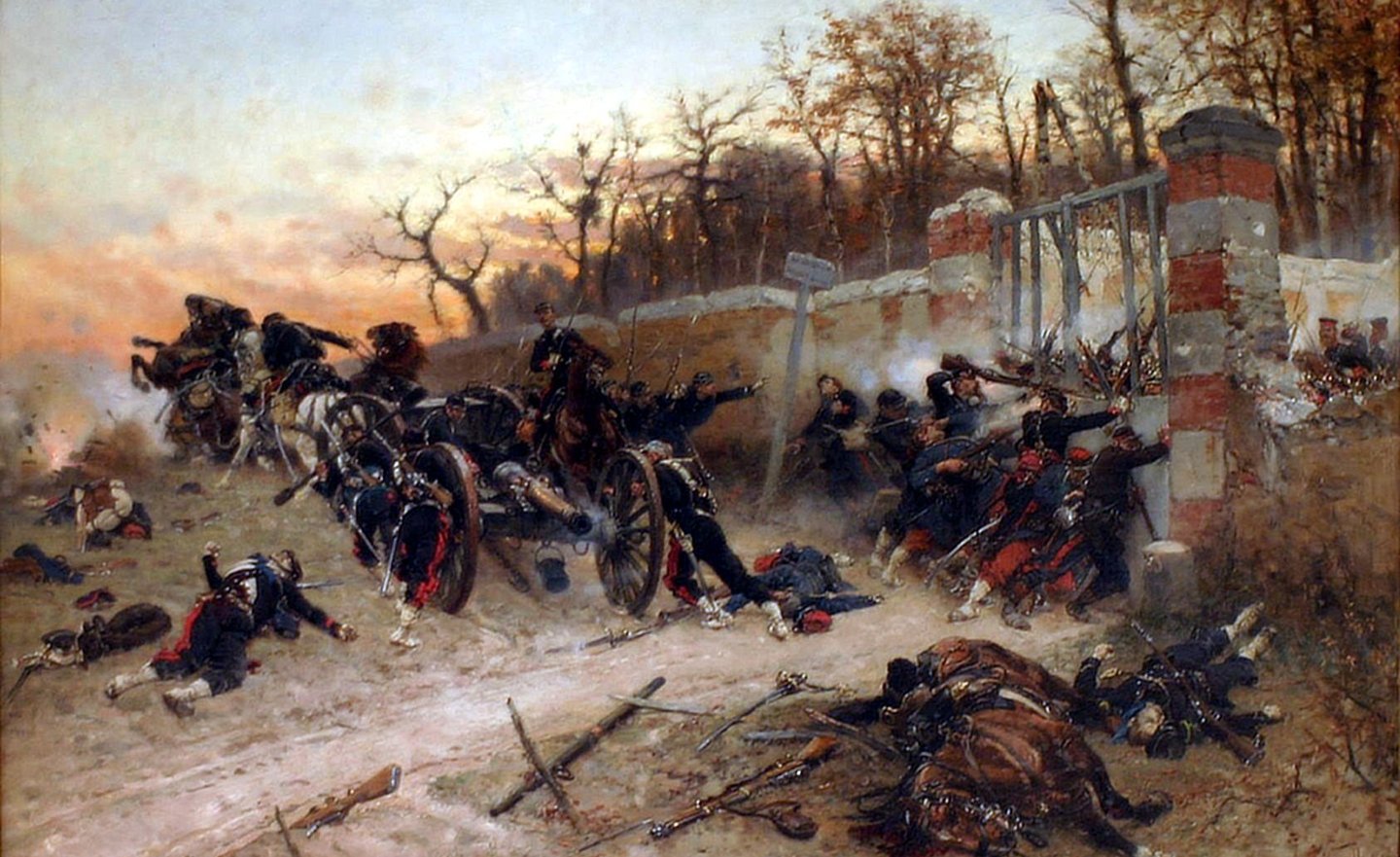

Wargaming the battle
Although I have accurate information as to the major formations represented during the sortie, I lack full information as to exactly which regiments actually participated, especially the French. Several of those known to have been involved are mentioned. I have therefore created OBs for both sides based on what units I know were there and guessed at the units based on the OBs of the major formations near that date. Feel, therefore, free to change whatever cocktail of units suits your game. If you have more detailed information, I would love to hear from you so that I can update the article accordingly.
French
CinC: General Ducrot
General Berthault: 3,400 men.
2nd, 3rd, 4th, 5th Loire Battalions (Garde Mobile)
1st, 4th, 5th Lower Seine Battalions (Garde Mobile)
2nd Drome Battalion (Garde Mobile)
3 batteries (20 guns total)
General Noel: 1,350 men.
4th Zouaves (4 companies)
119th Regiment of the Line (one battalion)
2 batteries (10 guns total)
Colonel Collotou: 1,600 men.
120th Regiment of the Line (three battalions)
one squadron of cavalry
2 batteries (10 guns total)
In Reserve:
General Martenot: 2,000 men.
1st, 2nd, 4th (Ille & Vilaine battalions Garde Mobile)
3 batteries (18 guns total)
General Paturel: 2,000 men.
121st Regiment of the Line (two battalions)
4-5 batteries (28 guns total)
Guns of Fort Valérien (20 guns)
Prussian
3rd Division, 5th Corps: Lieutenant General von Schmidt
19th Infatry Brigade: Colonel von Hening auf Schöndorff.
6th (1st West Prussian Grenadier) Infantry Regiment (3 battalions)
46th (1st Lower Silesian) Infantry Regiment (3 battalions)
20th Infantry Brigade: Major General von Monbary.
37th (Westphalian Fusilier) Infantry Regiment (3 battalions)
50th (3rd Lower Silesian) Infantry Regiment (3 battalions)
3rd Foot battalion, 5th Artillery Regiment
14th (Kurmark Dragoon Regiment)
Other units are involved in the area.
1st Guard Landwehr battalion (my current understanding is that it was one company)
Artillery of IV Corps late in the day. Two horses and one foot battery were possibly involved.
The participants objectives
The French objectives are simple (so easily said). Take and hold till sunset (6pm) the hamlets of Malmaison, Jonchère, and Buzenval. If totally defeated before sunset the game is obviously over.
The Prussian’s have to hold the line and prevent the capture of any of the mentioned villages or chateau/strongpoints. No additional forces can be involved until 5pm, by this I mean the IV Corps artillery cannot come into action before that time. They can be represented by being off table.
Fire from Fort Valérien (off table preferably, but at discretion) will always be at long range of heavy guns, and will cease firing as soon as the French columns move with the firing arc of the guns and between the guns and the target. Discretion and gentlemanly agreement is necessary. I would also assume the Prussians would be under hard cover whilst under bombardment unless moving in range in the open.
Winners and losers
I suggest that the French begin with zero points and the Prussians twelve. If the French capture a village they gain four points whilst the Prussians lose four points. Any key points, e.g. The Château of Buzenval, gained by either side add two points. perhaps just add a couple more key points, farms, villas parks etc to add flavour. Any additional villages other than those named above that lie between the opposing forces gain a point.